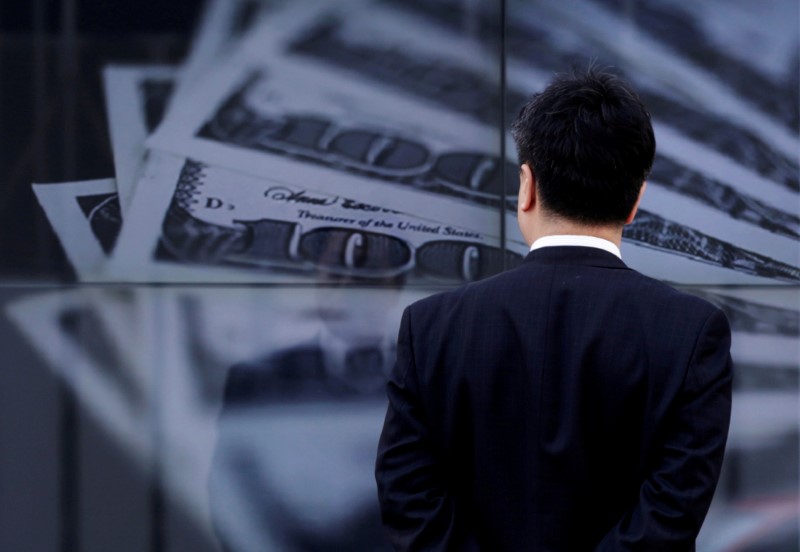Investing.com– The U.S. dollar steadied on Wednesday, retaining a bulk of its overnight gains after strong consumer inflation data furthered bets on higher-for-longer rates, while the British pound tread water before key GDP data.
Strength in the dollar kept most other G7 currencies trading largely rangebound, with the , and moving less than 0.1% in either direction.
But the saw some strength amid continued focus on a policy shift by the Bank of Japan.
GBP rangebound with data barrage in focus
The steadied on Wednesday at about 1.2792 against the dollar, in anticipation of several key economic readings.
data, and for January are all due later in the session, and are expected to offer more cues on the British economy, as it grapples with sluggish growth.
The GDP data in particular will be in close focus, after the economy shrank slightly less than expected in December. Analysts expect a month-on-month expansion on 0.2% in January.
In the Euro zone, inflation from Germany is on tap. The euro moved little, but remained within sight of two-month highs.
Dollar steady as CPI beats expectations, more econ. cues on tap
The and fell slightly, but retained a bulk of their overnight gains after a stronger-than-expected reading on inflation.
The reading showed that inflation remained stickier than expected, feeding into concerns that the Federal Reserve will have little impetus to begin trimming interest rates.
Still, markets maintained their bets that the Fed will have enough cause to begin cutting rates by June, with a 25 basis point reduction still on the cards, according to the .
But the hotter CPI reading potentially sets the stage for a stronger reading on inflation due later this week. U.S. data for February is also due on Thursday.
Japanese yen firms amid BOJ rate hike watch
The rose 0.3% on Wednesday, as signs of incoming wage hikes in Japan drummed up expectations for an imminent interest rate hike from the Bank of Japan.
Media reports showed Toyota Motor Corp (NYSE:) (TYO:), one of Japan’s biggest employers, had agreed to steep wage hikes with a labor union. Other employers also appeared to have followed suit.
Increased wages, coupled with recent, sticky inflation indicators, give the BOJ more impetus to end its negative interest rates and yield curve control policy.
Reuters reported that the BOJ was gearing up to signal how it will conduct bond purchases after ending its ultra-dovish policies.
The BOJ is set to , and is pipped to either raise interest rates then or during a late-April meeting. Higher rates bode well for the yen, which was battered by rising U.S. rates over the past two years.
Read the full article here




